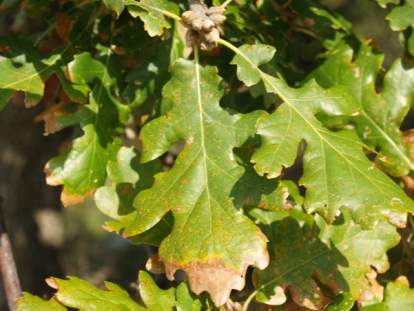
Photo 1. A hairy oak gall on the twig of a downy oak growing on Ćuf Peninsula
near Njivice (Photo by M. Randić)
ROSULJE FOREST NEAR NJIVICE – DIFFERENT TYPES OF OAK TREES AND DIVERSE OAK GALLS
Situated directly along the seashore, the lovely sub-Mediterranean
forest in the Rosulje area near Njivice almost become the victim of a
merciless fate. At the last moment (but only for the time being?), the
forest was spared from felling. On the oak trees (which are very diverse)
growing in the forest, we came across a multitude of oak galls of different
shapes, a special feature of the biological diversity of the forest in
the environs of Njivice.
DIVERSITY OF OAK GALLS ON OAK TREES
The forest in the Rosulje area near Njivice, in particular,
and the surrounding sub-Mediterranean forest, in general, feature remarkable
specimens of old downy oak trees (Quercus pubescens) and Turkey oak trees
(Quercus cerris), growing side by side. The many forms in which these
oaks can be found indicate the possibility of introgression, that is,
the crossbreeding between these two (or maybe more?) oak species. We came
to this conclusion by observing the different shapes of the trees’ leaves,
the shape and size of their fruit, the unusual characteristics of the
bark, etc. on many of the oak specimens in the forest (see Photo 4). As
we were unable to find any data about this phenomenon in the literature,
this makes the forests near Njivice all the more important as a potential
source of new scientific knowledge.
The forests surrounding Njivice are teeming with Turkey
oak trees, primarily due to the thick layers of reddish soil (red soil
turned brown) characteristic of this part of Krk Island. The Turkey oak
is obviously suited to this type of soil. In fact, a part of the forest
area not far from Njivice is called Cerova (derived from “cer”,
the Croatian name for Turkey oak). In the forest communities surrounding
Njivice, there is also no shortage of the downy oak, it being the most
widely-spread oak species in the sub-Mediterranean forests of Krk Island.
While we were taking in the beauty of the forests in
the Rosulje area and elsewhere around Njivice and noting the diversity
of oak trees, an interesting phenomenon caught our eye – the polymorphism
of oak galls produced by gall wasps (Cynipidae) on the twigs, leaves and
buds of oak trees. We found oak galls of all shapes: hairy oak galls,
round and smooth galls, round and wrinkled galls, spiny galls, conical
galls… It seems to us that it would be very interesting to investigate
whether the oak galls on the assumed hybrid oaks are different from those
found on the ordinary forms of oak. This biodiversity could be yet another
argument in favour of saving the forest in the Rosulje area, in addition
to the unequivocal landscape value that this preserved wooded coastal
zone possesses.
Keywords: downy oak, Turkey oak, hybrids, Krk Island,
Njivice, gall wasps (Cynipidae)
Marko Randić

Photo 2. Round-shaped oak galls, Rosulje forest near Njivice (Photo by
M. Randić)

Photo 3. Oak gall formed by a gall wasp of the genus Andricus, family
Cynipidae, on a downy oak at Rosulje near Njivice (Photo by M. Randić)

Photo 4. Leaves of an oak tree that we assume could be a hybrid between
a downy oak and a Turkey oak, at Ćuf Peninsula, Njivice (Photo by M. Randić)



